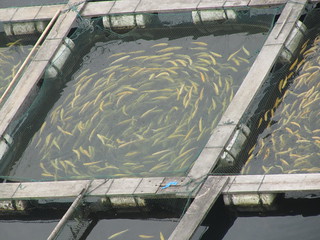There is a looming fear of how antibiotics in aquaculture are used. Creating more adaptive strains as they are used on each level of the production chain - so they are only available for use for a selective time before becoming obsolete. As such Aidan Hollis from the University of Calgary proposes that a user fee be added to those aquaculture produces whom use anti-biotics. However this article challenges that notion; emphasizing on the simple fact that aquaculture only produces 150,000kg of anti-biotics per year, the same equivalent as the amount produced for pets - alternatively livestock produces 13,540,000kg of anti-biotics per year. With aquaculturalists using approximately 50 grams of anti-biotics per tonne of feed and 5 grams per tonne of fish produced. When looking at the numbers it can be simply stated the aquaculture has a non-impact on the proliferation of anti-biotics.
Read more here.
Denmark has made great strides on improving its policies in order to facilitate future aquaculture growth and development. Focusing on its development of a new strategy to put greener technologies at the fore front of fish farm production. Implementing state-of-the-art recirculation which vastly improves efficiency and sustainability of Danish fish farms - exponentially outweighing the possible costs of implementing the technology.
Read more here.
Read more here.
Denmark has made great strides on improving its policies in order to facilitate future aquaculture growth and development. Focusing on its development of a new strategy to put greener technologies at the fore front of fish farm production. Implementing state-of-the-art recirculation which vastly improves efficiency and sustainability of Danish fish farms - exponentially outweighing the possible costs of implementing the technology.
Read more here.
 |
| Fishing Farm, Jian De, Hangzhou, Shanghai (Photo credit: IvanWalsh.com) |
